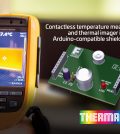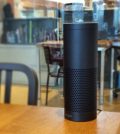Design Partner Programme, a new way for independent design houses

The electronics design function inside conventional OEMs now tends to work in collaboration with third parties, including independent design houses, to develop complete end-product designs.
This is due to time-to-market pressures, the increasing specialisation of electronics design, and the need to incorporate communications technology into previously stand-alone products. Independent design houses with RF expertise, for instance, are often commissioned to add wireless communications capability to industrial products which require a new machine-to-machine interface.
 It has traditionally been difficult for these design houses and consultants to gain access to current information and development resources and to verify the royalty payments due to them from OEM customers. They are a heterogeneous group, ranging from one-man bands to large service companies with hundreds of employees, providing a broad range of services and functions and often serving only local markets. This has made it difficult for component manufacturers and the electronics supply chain to put in place systems for supporting and communicating with them.
It has traditionally been difficult for these design houses and consultants to gain access to current information and development resources and to verify the royalty payments due to them from OEM customers. They are a heterogeneous group, ranging from one-man bands to large service companies with hundreds of employees, providing a broad range of services and functions and often serving only local markets. This has made it difficult for component manufacturers and the electronics supply chain to put in place systems for supporting and communicating with them.
Now Future Electronics has introduced a scheme which is intended to ease the problems that design houses face when dealing with component suppliers. Called the Design Partner Programme, this initiative serves three main purposes:
- Improving the flow of technical information to design houses
- Providing access to free development boards and tools in support of specific design projects
- Tracking production to enable design houses to claim the royalty payments they are due more easily
Future Electronics configured the programme in this way after lengthy research into the problems that design service providers face. For instance, in spite of the encyclopaedic scope of the information available on the internet, it is difficult for design consultants to filter out irrelevant or unhelpful data and to find out the information about components that they really need. When designing, problems are common: a part might not appear to behave in accordance with its specifications, it might have a bug, or the datasheet might fail to characterise a part’s behaviour adequately. In these cases, direct access to the component manufacturer might be helpful, but is not available to design houses.
Faced with this problem, OEM design engineers are accustomed to dealing with a franchised distributor, which can provide support in the same way as the component manufacturer.
Now design houses can also take advantage of this facility when they enrol as members of Future Electronics’ Design Partner Programme. Just as OEMs can, design houses can enjoy support from Field Applications Engineers (FAEs) in their local branch of Future Electronics, supported as necessary by specialists in divisions such as Future Connectivity Solutions, Future Energy Solutions and Future Power Solutions. Design partners can also gain access to much of the supplier training available to Future Electronics’ FAEs. In addition, the FAEs can pass on to design houses information acquired as part of the process of qualifying as an ARM Accredited Microcontroller Engineer (AAME), a requirement for all Future Electronics FAEs in Europe by the end of 2014.
 The technical support available to members of the Design Partner Programme is reinforced by eligibility for free development boards and other tools through Future Electronics’ FTM Board Club. When a design house is developing a concept, prototype or end product with a valid commercial rationale qualified by a Future Electronics FAE, the design team may receive free manufacturers’ development boards relevant to the design. This provides a benefit worth potentially hundreds of dollars, and gives design houses privileged access to sometimes scarce tools and resources.
The technical support available to members of the Design Partner Programme is reinforced by eligibility for free development boards and other tools through Future Electronics’ FTM Board Club. When a design house is developing a concept, prototype or end product with a valid commercial rationale qualified by a Future Electronics FAE, the design team may receive free manufacturers’ development boards relevant to the design. This provides a benefit worth potentially hundreds of dollars, and gives design houses privileged access to sometimes scarce tools and resources.
The third main benefit of the Design Partner Programme is the tracking of royalties. It has become common for design service providers to be paid by royalties on production units of a board that they design, not on an hourly rate for the design work they do.
This imposes on the design houses the burden of tracking production of the boards they design – and of course production tends to be located on a continent other than Europe. This is a considerable administrative headache for design houses, which for good commercial reasons try to keep their support and administrative staff to a minimum.
But Future Electronics can lift much of the burden from design houses. As a global company with a single computing platform for inventory and order processing, Future Electronics can easily make the link between a completed design project with an approved bill of materials, and a volume production order placed anywhere in the world.
In other words, Future Electronics can provide complete royalty protection for design houses, without creating any additional infrastructure but simply using its existing distribution backbone.
If this all sounds too good to be true – it’s not. In fact, Future Electronics has a great deal to gain from a more productive co-operation with design partners, particularly as it can enable us to provide a more comprehensive service offering to our OEM customers. Many design houses will be able to provide local, technical or market-sector specialisms that Future Electronics lacks. This is good for design houses, and good for OEMs, and this means it is good for Future Electronics too.
That is why I invite all design houses anywhere in Europe, the Middle East and Africa to apply today to join the Design Partner Programme. All applications will be considered carefully; admission to the programme is via a face-to-face meeting with an FAE from the design house’s local branch of Future Electronics. With better information and resources and a reduced administrative burden, design houses will be better equipped to focus on what they do best: outstanding design work on behalf of the region’s electronics manufacturers.
Ralf Buehler, Managing Director, Future Electronics (EMEA)
Contenuti correlati
-
Future Electronics estende l’accordo di vendita in franchising con Maxim Integrated
Future Electronics ha concordato un’estensione del suo contratto di vendita in franchising con Maxim Integrated Products, consentendole di fornire i suoi rinomati servizi tecnici di vendita e i sofisticati servizi di supply chain a supporto dei prodotti...
-
Future Electronics garantisce copertura globale della gamma Infineon
Future Electronics ha concordato un’immediata estensione del suo contratto di vendita in franchising con Infineon per garantire una copertura mondiale per l’intera gamma di prodotti dell’azienda. In base al nuovo contratto, Future Electronics opererà in franchising per...
-
Future Electronics ottiene da Abracon il riconoscimento di Distributor of the Year
Future Electronics, ha ottenuto dal distributore Abracon tre riconoscimenti per il fatturato e il servizio assistenza. Abracon ha attribuito a Future Electronics il duplice riconoscimento di Global Distributor of the Year for 2019 e di EMEA Distributor...
-
La nuova scheda di sviluppo di Future Electronics per dispositivi IoT
Il distributore Future Electronics ha annunciato l’introduzione di Sequana, una piattaforma formata da hardware e software che consente di sviluppare rapidamente dispositivi IoT connessi e sicuri. La nuova piattaforma è costituita da una scheda madre, che opera...
-
Piattaforma di sviluppo per applicazioni di visualizzazione termica e rilevamento IR
Il distributore di componenti Future Electronics ha introdotto una scheda di sviluppo compatibile con Arduino che permette di effettuare misure di temperatura contactless e visualizzazione di immagini termiche. La nuova scheda di sviluppo è basata su uno...
-
GaNdalf : una nuova scheda per design di riferimento di stadi PFC
Future Electronics ha presentato la piattaforma di sviluppo GaNdalf che si propone come un modello di riferimento per la progettazione di circuiti PFC (Power Factor Correction) ad alte prestazioni per carichi fino a 1 kW. Nel progetto...
-
Future Electronics premiata da TE Connectivity
Future Electronics è stata premiata come Distributore dell’Anno 2017 da TE Connectivity sulla base di parametri quali aumento delle vendite e realizzazione degli obiettivi di business concordati, che contemplano anche un della base clienti, e un aumento della...
-
Come progettare nuovi sistemi di illuminazione intelligenti in grado di soddisfare le esigenze future
In questo articolo viene spiegato in che modo gli OEM possono iniziare immediatamente a sviluppare nuovi progetti di sistemi di illuminazione intelligenti, senza incorrere nel rischio dell’obsolescenza oppure di fare una scelta sbagliata Leggi l’articolo su EO...
-
Future fornisce i prodotti di GP Batteries
Future Electronics ha stipulato un accordo di distribuzione in franchise con GP Batteries, uno dei più importanti produttori mondiali di batterie primarie e ricaricabili per prodotti elettronici. L’intesa di distribuzione in franchise raggiunta con GP Batteries è...
-
Future, Cypress e Murata presentano il kit Nebula per IoT
Future Electronics ha annunciato insieme ai partner Cypress Semiconductor e Murata la disponibilità del kit di sviluppo Nebula per applicazioni IoT. Nebula è una scheda “IoT cloud ready” (ovvero che permette di gestire le applicazioni IoT in...



















